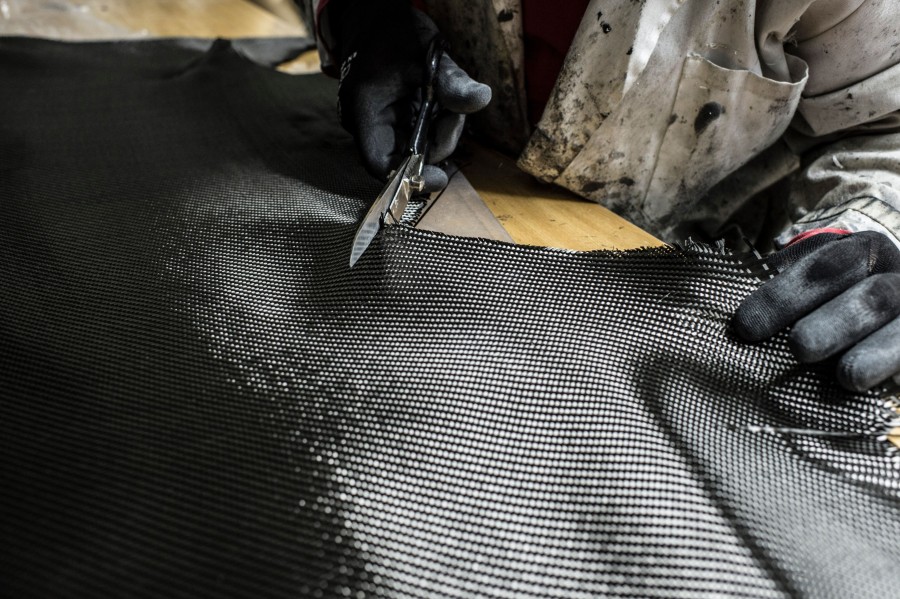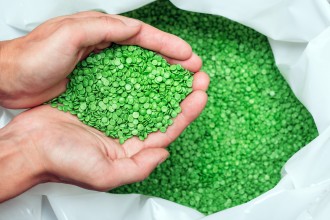-
1.Bioplastics
-
2.Carpet tiles
-
3.Olivine sand
-
6.To conclude
The increase in CO2 in the atmosphere means that less and less of the heat radiated by the earth can escape into space. This in turn favors the rise of temperatures and climate change on earth. So, it is high time to look at CO2-neutral materials!
Bioplastics
Normally, plastic is made from petroleum, a limited resource that takes centuries to decompose as a processed material. In addition, processing increases the CO2 content in the air. On the other hand, bioplastics are made from materials such as sugar cane or corn, which are rapidly renewable resources. Research is also currently being conducted on the use of blue-green algae. With these raw materials, carbon emissions can be reduced to zero and dependence on fossil resources reduced.
And despite the advantages, bioplastics should be reduced just as much as conventional plastics. And here is why: it is only sustainable if it remains in the material cycle and is disposed of appropriately. And as for carbon: the less processing in general, the less carbon.
Carpet tiles
We know it from almost all offices: old carpets from the last century. But now we also find brand-new carpet produced in a CO2-neutral way. This means that the materials used are recycled to an ever-greater extent and/or are biodegradable. But it also includes, for example, saving ways to increase efficiency within the company and buying carbon credits for CO2 content that previously could not be offset.
So, CO2 neutrality in carpet tiles is not just about the carpet itself, but also about the manufacturing and structures within the companies.
To be sure that carpet tiles are CO2 neutral, you can look for certification. Among others, there is the 'cradle-to-cradle' label, which applies to a wide variety of product types and is intended to promote the introduction of a circular economy.
Olivine sand
Olivine is a mineral that owes its name to its varying green color. As such, it is often used for jewelry, but when crushed into sand, it could be used in geoengineering to bind CO2. When it weathers, it removes carbon dioxide from the atmosphere and reacts with (rain) water to form carbonic acid. Weathering can be accelerated chemically, but the extent to which this would change the ecosystem of bodies of water is still being examined. It is therefore conceivable that it could be used as an alternative to conventional sand or gravel. Theoretically, one ton of olivine sand with water can bind one ton of CO2, which would mean that massive quantities of the mineral would first have to be mined. In addition, it would only be possible to bind about one tenth of the CO2 that humanity currently emits. So, it will not be a stand-alone solution soon, but it can be one of several methods to reduce greenhouse gases.
3D Printed Wood
All kinds of things are now being made with 3D printers, but the fact that wood can be printed is comparatively new. As a by-product of classic wood and paper processing, cellulose fibers are left over, which companies are now reusing for printing. In combination with lignin, natural biopolymers from the plant cell wall that contribute to lignification, a material is created that can be processed as desired.
This approach creates a sustainable, low-carbon alternative to traditional wood processing. The material consists of by- and waste products and further deforestation of trees can be avoided. This means that hardly any CO2 is produced in the manufacturing process, and the release of carbon from felled trees is also not encouraged.
And visually, the whole thing also offers advantages: complex designs that were not possible before now become reality.
Mycelium insulation
When we think of fungus, we may think of mushrooms or mold. Mycelium is neither. They are fungal threads that grow together to form a meshwork and can also incorporate other substances. This can now be used by allowing mycelium to grow in a controlled manner and adding agricultural waste, i.e., plant residues. In this way, the strength, appearance, or density of the resulting material can be influenced. Once fully grown, it can now be used as an insulating material that is not only fire-resistant and can outperform the most efficient synthetic building materials in terms of its structural-physical properties but can also bind carbon very effectively and consumes hardly any during production. If mycelium is bound with hemp, for example, to use it as packaging material, the result is even a C02-negative product, since hemp binds four times more carbon than wood. Mycelium thus is an alternative to conventional materials that scores super in all aspects.
To conclude
The development of new materials that save CO2 is currently running at breakneck speed. One innovation follows the next. Some have only advantages over the conventional alternative, making it worthwhile to use them or at least try them out. Others are “just” a part of the solution. All of them, however, can be used to promote climate protection.
Quickscout
Looking for suitable
technology providers?
Start scouting!








